Innovations in Trauma Therapy Conference – Bessel Van der Kolk & David Feinstein
Original price was: $439.00.$174.00Current price is: $174.00.
Innovations in Trauma Therapy Conference – Bessel Van der Kolk & David Feinstein Download. The Innovations In Trauma Therapy Conference 2014 features exper…
Salepage link: At HERE. Archive:
The Innovations In Trauma Therapy Conference 2014 features expert presenters teaching unique and innovative treatments. We have gathered an outstanding faculty to present the theory and application of innovative treatment models. Interactive dialogue and clinical demonstrations make this event both a valuable and a unique learning experience for professionals around the world. We are excited to share this knowledge and increase our collective ability to provide excellent care.
- Apply the principles of “bottom-up” processing to resolving traumatic experiences
- Recognizing differences between “top-down” and “bottom-up” processing
- Differentiate between the multiple systems involved in explicit and implicit memory
- Analyzing and describing the basic energy states of shutdown, hyperarousal and social engagement. In restoring self-regulation
- Accessing the felt-sense experience of the “deep-self” in stabilizing traumatic processing
- Delineate current diagnostic criteria for Developmental Trauma Disorder
- Show how and why Dissociative Disorders should not be treated with the types of exposure techniques used for PTSD Flashbacks
- Define and describe “time capsules” as related to DID
- Describe the use of at least two hypnotic techniques to treat DID
- Describe the relationship between DID and hypnotic capacity
- Define energy psychology
- Identify EFT and TFT as two forms of energy psychology
- Describe a physical intervention used in energy psychology protocols
- Discuss the difference between energy psychology as a self-help approach and as a clinical intervention explain that acupoint tapping reduces threat arousal in the amygdala
- Define the Dual Attunement Frame (relational and Neurobiological attunement together) in Brainspotting
- Describe Outside Window, Inside Window Brainspotting and Gazespotting and how they are determined
- Discuss how the processing in Brainspotting is facilitated by observing the focused, sequential, internal experience of the client
- Name one physiological sign of likely PTSD
- Identify a life stage associated with the subsequent development of PTSD after experiencing a Category A traumatic event
- Name at least one clinician of the post WWII period identified with the development of the PTSD diagnosis
- Define secondary traumatization
Session 1: Conference Introduction (Maggie Phillips, Ph.D., and Steve Frankel, Ph.D., J.D., ABPP (Clinical & Forensic))
Session 2: How the Living, Sensing Body Resolves Trauma, Establishes Safety and Restores Resilience: Clinical Implications (Peter Levine, Ph.D.)
- Therapeutic work with traumatized individuals, and those suffering from deeply distressing emotions, can be greatly facilitated by utilizing bottom-up (body awareness) in concert with top-down (“psychological”) processing. We find that a potent fulcrum for long-term change resides in accessing innate body movements and sensations associated with the “true-self.” Then from that potent and enduring platform, individuals can be guided gradually to touch into, and transform, traumatic experiences. Effective therapy helps people move from shutdown (numbness) and hyperarousal (overwhelm) to “healthy aggression,” safety, and the capacity for intimate relationship.
Session 3: Somatic Approaches to Ego-State Therapy: Using the Body’s Organic Intelligence to Resolve Traumatic Conflicts of the Self (Maggie Phillips, Ph.D.)
- This presentation presents a new use of Somatic Experiencing to help heal the fragmentation often caused by dissociation and personality division. Ego-State Therapy is one of the primary approaches used to heal inner conflict, dissociation, and other posttraumatic symptoms. Combining Somatic Experiencing with Ego-State Therapy provides more depth and permanence to this process, promoting healing from the bottom level up, assisting with self-regulation, and managing and promoting sensorimotor integration through completed somatic patterns. The video demonstration that illustrates this approach features an adult client struggling to find balance between autonomy and connection in her life. Using a somatic approach to Ego-State Therapy, she resolved many of the physical, emotional, and spiritual conflicts related to a near-drowning experience at the age of four. The discussion following the video accents the strategies that helped complete somatic patterns, facilitated emotional regulation and promoted embodied personality integration.
Session 4: Developmental Trauma Disorder: The Nexus of Attachment, Trauma and Brain (Bessel van der Kolk, M.D.)
- Every year, there are ten times as many children in the US reported to be victims of domestic violence, neglect and abuse than combat soldiers from Iraq and Afghanistan diagnosed with PTSD. However, these children live in a diagnostic void because the current DSM-IV conceptualization of PTSD does not reflect the symptoms experienced by the vast majority of these children. For when trauma occurs within the context of what is supposed to be a safe interpersonal attachment, the trauma picture takes on a profoundly different shape and has profound effects on brain development and the formation of the self. So, instead, abused and neglected children receive such widely disparate diagnoses as bipolar disorder, conduct disorder, ADHD, and other anxiety disorders. All of these diagnoses are etiologically unrelated to trauma and lead to pharmacological and behavioral control at the expense of dealing with the fear, shame, terror and rage that derive from real threats to these children’s survival. The lack of proper diagnosis also has profound implications on insurance reimbursement, treatment development and clinical research. Thus these children are condemned to receive treatments that are likely to be ineffective and therefore put them at risk to grow up to be unproductive, expensive, potentially dangerous, and long-suffering members of our society.
Session 5: The Polyvagal Theory: Demystifying the Body’s Response to Trauma (Stephen Porges, Ph.D.)
- This presentation will focus on the restorative power of understanding the adaptive function of stress reactions as an important adjunct to treatment. By deconstructing the biobehavioral features of stress reactions, both client and therapist are better informed in their journey to a successful outcome. The presentation will emphasize the role of “neuroception,” a neurophysiological process through which our nervous system evaluates risk in the environment, without awareness and often independent of a cognitive narrative. Trauma may reset neuroception to protect us from others when there is no “real” danger. The presentation will inform the therapist about how to assess the deleterious consequences of trauma-related experiences by understanding the adaptive psychological, behavioral, and health features of each of the three “Polyvagal” visceral response strategies (i.e., social engagement, mobilization, and immobilization ) and how successful therapeutic interventions promote a neuroception of safety with the consequential improvements in mental and physical health by enabling mobilization and immobilization to occur without fear.
Session 6: Opening “Time Capsules”: A Hypnotic Approach to the Treatment of DID (Steve Frankel, Ph.D., J.D., ABPP (Clinical & Forensic))
- This presentation will focus on a 73 year old woman whom I have been treating for over 20 years. She has done exceedingly well in treatment, as evidenced by her level of functioning. However, she suffers from a substantial number of child parts who are “stuck in time capsules.” They are in flashbacks. Their situations significantly impact her personal functioning. In this session, several alters emerge, are engaged utilizing hypnotic techniques, and show immediate benefit from these interventions.
Session 7: Energy Psychology in Treating Trauma-Based Conditions (David Feinstein, Ph.D.)
- Tapping on selected acupuncture points while targeted scenes are mentally activated can eliminate maladaptive fear responses to traumatic memories and related cues. Known as energy psychology, research supports the efficacy of the approach for alleviating PTSD and other difficult conditions with surprising speed and power. Disaster response teams, from Rwanda to Newtown, have been using it with striking success. Clinicians new to the method are routinely impressed by the way that incorporating tapping protocols into the modalities they are already using boosts their effectiveness. This seminar will show brief video clips of four combat veterans prior to treatment, during treatment, and post-treatment, and a longer session that illustrates the technique in greater detail with a trauma-induced phobia. Discussion will include clinical considerations in using energy psychology and possible mechanisms of action.
Session 8: Brainspotting: Accessing the Subcortical Brain through Your Visual Field to Resolve Trauma (David Grand, Ph.D.)
- Brainspotting may be viewed from several perspectives. It is a positive, client centered approach which develops and holds the dual attunement frame to promote the client’s innate self-healing capacities. Brainspotting is also a phenomenological approach where the therapist observes every aspect of the client’s experience with curiosity, and without imposing any judgment or point of view. Third, brainspotting is a creative, integrative model which invites the therapist to make use of their own wisdom and previous training. Brainspotting can be applied to performance and creativity expansion as well as to trauma.
Session 9: An Integrative Approach to Stabilization with Dissociative Clients (Kathy Steele, MN, CS)
- This presentation will offer an integrative approach to stabilization in clients with dissociation, ranging from Complex PTSD, DDNOS, and DID. Since childhood abuse and neglect interfere with normal development across wide areas of functioning, clients are generally not yet able to integrate traumatic memories. Instead they suffer from flashbacks, intrusions from, or switching to, child parts that are overwhelmed and not oriented to the present, have serious unresolved inner conflicts, and struggle with daily life. Thus, early treatment is most effective when it focuses on supporting the client to overcome developmental deficits, using a phase-oriented, relational model. There are many helpful models for treating trauma, but many of them do not include ways to address the underlying dissociative organization of the client’s inner experience. We will focus on an eclectic, integrative approach to stabilize dissociative clients, which incorporates many therapeutic approaches I have found helpful over 30 years of experience. I use a wide variety of relational, cognitive, mindfulness, affective, somatic, ego state, psychodynamic, EMDR, and hypnotic techniques. A demonstration of some of these techniques and their positive effects will be shown in a video of a session with a client who had DDNOS.
Session 10: Energy Psychology Treatment for PTSD: Evidence, Clinical Application, and Cautions (Dawson Church, Ph.D.)
- Studies published in the past few years have shown that energy psychology techniques such as EFT (Emotional Freedom Techniques) and TFT (Thought Field Therapy) meet APA Division 12 (Clinical Psychology) criteria as “empirically validated treatments” for PTSD. Previously, APA reviews had identified PTSD as a “treatment-resistant” condition that often worsens over time as neural plasticity reinforces the pathways in the brain that conduct the signals of emotional trauma. The evidence from these recent clinical trials indicates that energy psychology may efficiently remediate clinical levels of PTSD in treatment time frames ranging from 4 to 10 sessions. This presentation reviews the evidence in the context of the APA criteria. It then presents clinical case histories, discusses the physiological mechanisms at work, such as reduced levels of stress hormones like cortisol and reduced levels of brain waves such as high beta, identifies comorbidities such as depression and anxiety that improve after successful PTSD treatment, and suggests ways in which these therapies may be applied in settings such as Veterans Administration hospitals, managed health care plans, and outpatient clinics.
Session 11: Using Ochberg’s Counting Method as a Critical Element of Post-traumatic Therapy (Frank Ochberg, M.D.)
- The signature symptom of PTSD is the trauma memory that bursts into consciousness, whether it is as intense as a full-blown flashback or as insidious as the odor of a rapist’s aftershave. I prefer to establish a sense of collegiality and comfort before tackling the trauma memory, but sooner or later, survivor and therapist must look at the ghosts of the past together. One of my long term Vietnam vet PTSD patients, Terry, agreed to have several of our sessions filmed as we approached the end of treatment. The film, produced by Victor Yalom, runs over two hours and is available for purchase. I’ll show a short and a long excerpt, illustrating a general approach to treatment and a detailed discussion of “Ochberg’s Counting Method.” The Counting Method helps reduce the intensity and the frequency of unwanted, intrusive traumatic memory.
Here's an overview of the prominent keywords and a list of famous authors:
Business and Sales: Explore business strategies, sales skills, entrepreneurship, and brand-building from authors like Joe Wicks, Jillian Michaels, and Tony Horton.
Sports and Fitness: Enhance athleticism, improve health and fitness with guidance from experts like Shaun T, Kayla Itsines, and Yoga with Adriene.
Personal Development: Develop communication skills, time management, creative thinking, and enhance self-awareness from authors like Gretchen Rubin, Simon Sinek, and Marie Kondo.
Technology and Coding: Learn about artificial intelligence, data analytics, programming, and blockchain technology from thought leaders like Neil deGrasse Tyson, Amy Cuddy, and Malcolm Gladwell.
Lifestyle and Wellness: Discover courses on holistic health, yoga, and healthy living from authors like Elizabeth Gilbert, Bill Nye, and Tracy Anderson.
Art and Creativity: Explore the world of art, creativity, and painting with guidance from renowned artists like Bob Ross and others.
All the courses on WSOlib are led by top authors and experts in their respective fields. Rest assured that the knowledge and skills you acquire are reliable and highly applicable.
Specification: Innovations in Trauma Therapy Conference – Bessel Van der Kolk & David Feinstein
|
User Reviews
Only logged in customers who have purchased this product may leave a review.

Original price was: $439.00.$174.00Current price is: $174.00.

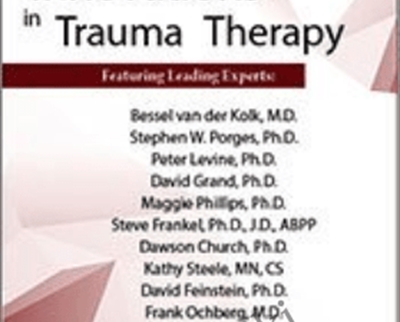





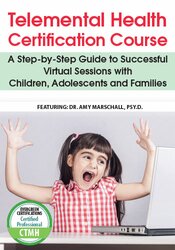
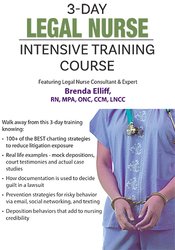
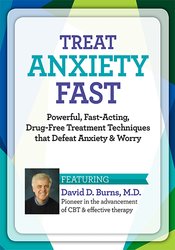
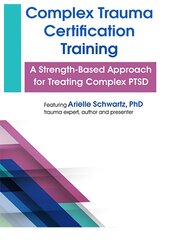
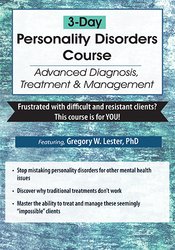
There are no reviews yet.